-
 Bitcoin
Bitcoin $106,754.6083
1.33% -
 Ethereum
Ethereum $2,625.8249
3.80% -
 Tether USDt
Tether USDt $1.0001
-0.03% -
 XRP
XRP $2.1891
1.67% -
 BNB
BNB $654.5220
0.66% -
 Solana
Solana $156.9428
7.28% -
 USDC
USDC $0.9998
0.00% -
 Dogecoin
Dogecoin $0.1780
1.14% -
 TRON
TRON $0.2706
-0.16% -
 Cardano
Cardano $0.6470
2.77% -
 Hyperliquid
Hyperliquid $44.6467
10.24% -
 Sui
Sui $3.1128
3.86% -
 Bitcoin Cash
Bitcoin Cash $455.7646
3.00% -
 Chainlink
Chainlink $13.6858
4.08% -
 UNUS SED LEO
UNUS SED LEO $9.2682
0.21% -
 Avalanche
Avalanche $19.7433
3.79% -
 Stellar
Stellar $0.2616
1.64% -
 Toncoin
Toncoin $3.0222
2.19% -
 Shiba Inu
Shiba Inu $0.0...01220
1.49% -
 Hedera
Hedera $0.1580
2.75% -
 Litecoin
Litecoin $87.4964
2.29% -
 Polkadot
Polkadot $3.8958
3.05% -
 Ethena USDe
Ethena USDe $1.0000
-0.04% -
 Monero
Monero $317.2263
0.26% -
 Bitget Token
Bitget Token $4.5985
1.68% -
 Dai
Dai $0.9999
0.00% -
 Pepe
Pepe $0.0...01140
2.44% -
 Uniswap
Uniswap $7.6065
5.29% -
 Pi
Pi $0.6042
-2.00% -
 Aave
Aave $289.6343
6.02%
Is a small-volume cross star a signal of a change in the market?
A small-volume cross star may signal a market shift, but traders should seek confirmation from other indicators and consider market context to avoid false signals.
Jun 09, 2025 at 08:28 am
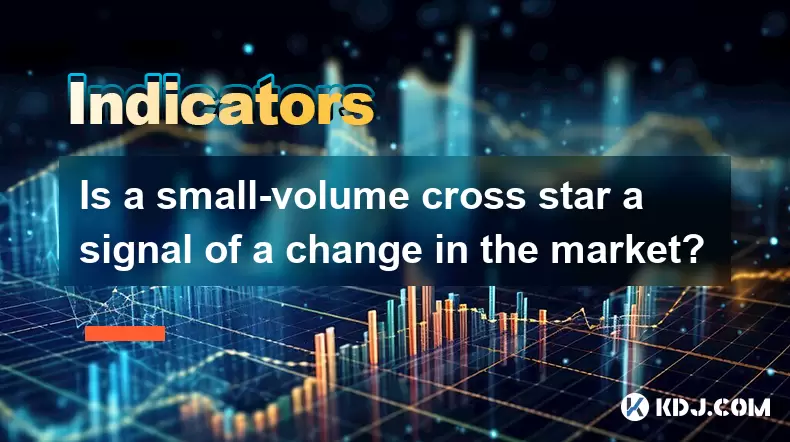
Is a small-volume cross star a signal of a change in the market?
In the dynamic world of cryptocurrencies, traders and investors are always on the lookout for signals that could indicate a shift in market trends. One such potential signal is the small-volume cross star, a candlestick pattern that appears on price charts. Understanding whether this pattern indeed signals a change in the market requires a detailed examination of its characteristics, the context in which it appears, and its implications for traders.
Understanding the Small-Volume Cross Star
A small-volume cross star is a type of candlestick pattern that emerges on a price chart. It is characterized by a small body, where the opening and closing prices are very close to each other, and a small trading volume. The pattern is called a "cross" because it resembles a plus sign or a cross, with the body of the candle being the horizontal line and the shadows (or wicks) forming the vertical lines.
This pattern can appear in both bullish and bearish contexts, and its significance can vary depending on the surrounding market conditions. A small-volume cross star often indicates a period of indecision among traders, where neither buyers nor sellers are able to gain significant control over the market.
Context and Market Conditions
The context in which a small-volume cross star appears is crucial in determining its potential as a signal for market change. If this pattern emerges after a prolonged uptrend or downtrend, it could suggest that the prevailing trend is losing momentum. Traders often look for confirmation from other technical indicators, such as moving averages, RSI (Relative Strength Index), or MACD (Moving Average Convergence Divergence), to validate the potential shift.
For instance, if a small-volume cross star appears at the end of a bullish trend, and the RSI is showing overbought conditions, it could be a warning sign that the market might be preparing for a reversal. Similarly, if the pattern emerges at the end of a bearish trend, and the RSI indicates oversold conditions, it might suggest that a bullish reversal could be on the horizon.
Volume and Its Significance
The volume associated with a small-volume cross star is a critical factor in assessing its reliability as a signal. Low volume during the formation of this pattern indicates that there is little conviction among traders, which can be a precursor to a significant market move. However, if the volume is exceptionally low, it might also mean that the market is simply taking a breather and not necessarily preparing for a major shift.
Traders should compare the volume of the small-volume cross star with the average volume over the recent trading period. If the volume is significantly lower than the average, it could enhance the pattern's significance as a signal of potential market change.
Real-Life Examples and Case Studies
To better understand the implications of a small-volume cross star, let's look at a few real-life examples from the cryptocurrency market.
Example 1: In early 2021, Bitcoin (BTC) experienced a prolonged uptrend, reaching new all-time highs. On a specific day, a small-volume cross star appeared on the daily chart, followed by a sharp decline in price over the next few days. This pattern, combined with overbought RSI conditions, signaled to many traders that a correction was imminent.
Example 2: In late 2020, Ethereum (ETH) was in a downtrend, with prices steadily declining. A small-volume cross star formed on the weekly chart, and subsequent days saw an increase in buying pressure, leading to a bullish reversal. The low volume during the pattern's formation suggested a lack of conviction among sellers, paving the way for buyers to regain control.
These examples illustrate how a small-volume cross star can serve as a warning sign of potential market shifts, but it is essential to consider the broader market context and other technical indicators for confirmation.
Trading Strategies Based on the Small-Volume Cross Star
When a small-volume cross star appears, traders can adopt several strategies to capitalize on potential market changes. Here are some approaches:
Wait for Confirmation: Instead of acting immediately on the appearance of a small-volume cross star, traders should wait for additional signals from other technical indicators. This can help reduce false positives and increase the reliability of the pattern as a signal.
Use Stop-Loss Orders: If a trader decides to take a position based on the small-volume cross star, setting a stop-loss order can help manage risk. For instance, if the pattern suggests a potential bearish reversal, placing a stop-loss order above the high of the cross star can limit potential losses if the market moves against the expected direction.
Combine with Other Patterns: Traders can enhance the effectiveness of the small-volume cross star by combining it with other candlestick patterns or technical indicators. For example, if a small-volume cross star is followed by a bearish engulfing pattern, it could strengthen the case for a bearish reversal.
Monitor Volume Trends: Keeping an eye on volume trends before and after the appearance of a small-volume cross star can provide additional insights. A subsequent increase in volume could confirm the pattern's significance, while a continued low volume might suggest that the market is still in a state of indecision.
Limitations and Risks
While a small-volume cross star can be a useful tool for traders, it is not without its limitations and risks. One of the primary challenges is the potential for false signals. Not every small-volume cross star will lead to a significant market change, and traders must be cautious not to overreact to every occurrence of the pattern.
Additionally, the reliability of the small-volume cross star can vary depending on the time frame of the chart. Patterns that appear on shorter time frames, such as 1-minute or 5-minute charts, may be less reliable than those on longer time frames, such as daily or weekly charts.
Traders should also be aware of the broader market sentiment and news events that could influence price movements. A small-volume cross star may be overshadowed by significant news or events that drive the market in a different direction.
Frequently Asked Questions
Q: How can I differentiate a small-volume cross star from other similar candlestick patterns?
A: A small-volume cross star is distinguished by its small body, where the opening and closing prices are very close, and its low trading volume. Other similar patterns, such as the doji or spinning top, may have similar shapes but can differ in terms of volume and the context in which they appear. A doji, for example, typically has no body and can occur with varying volumes, while a spinning top has a small body but longer shadows.
Q: Can a small-volume cross star be used as a standalone signal for trading decisions?
A: While a small-volume cross star can provide valuable insights, it is generally not recommended to use it as a standalone signal. Traders should combine it with other technical indicators and consider the broader market context to increase the reliability of their trading decisions.
Q: What time frames are most effective for identifying a small-volume cross star?
A: The effectiveness of a small-volume cross star can vary depending on the time frame. Patterns on longer time frames, such as daily or weekly charts, tend to be more reliable than those on shorter time frames, such as 1-minute or 5-minute charts. Traders should consider using multiple time frames to confirm the pattern's significance.
Q: Are there specific cryptocurrencies where the small-volume cross star is more effective?
A: The effectiveness of a small-volume cross star is not limited to specific cryptocurrencies but rather depends on the overall market conditions and the liquidity of the asset. Highly liquid cryptocurrencies like Bitcoin and Ethereum may provide more reliable signals due to their higher trading volumes and broader market participation.
Disclaimer:info@kdj.com
The information provided is not trading advice. kdj.com does not assume any responsibility for any investments made based on the information provided in this article. Cryptocurrencies are highly volatile and it is highly recommended that you invest with caution after thorough research!
If you believe that the content used on this website infringes your copyright, please contact us immediately (info@kdj.com) and we will delete it promptly.
- 2025-W Uncirculated American Gold Eagle and Dr. Vera Rubin Quarter Mark New Products
- 2025-06-13 06:25:13
- Ruvi AI (RVU) Leverages Blockchain and Artificial Intelligence to Disrupt Marketing, Entertainment, and Finance
- 2025-06-13 07:05:12
- H100 Group AB Raises 101 Million SEK (Approximately $10.6 Million) to Bolster Bitcoin Reserves
- 2025-06-13 06:25:13
- Galaxy Digital CEO Mike Novogratz Says Bitcoin Will Replace Gold and Go to $1,000,000
- 2025-06-13 06:45:13
- Trust Wallet Token (TWT) Price Drops 5.7% as RWA Integration Plans Ignite Excitement
- 2025-06-13 06:45:13
- Ethereum (ETH) Is in the Second Phase of a Three-Stage Market Cycle
- 2025-06-13 07:25:13
Related knowledge
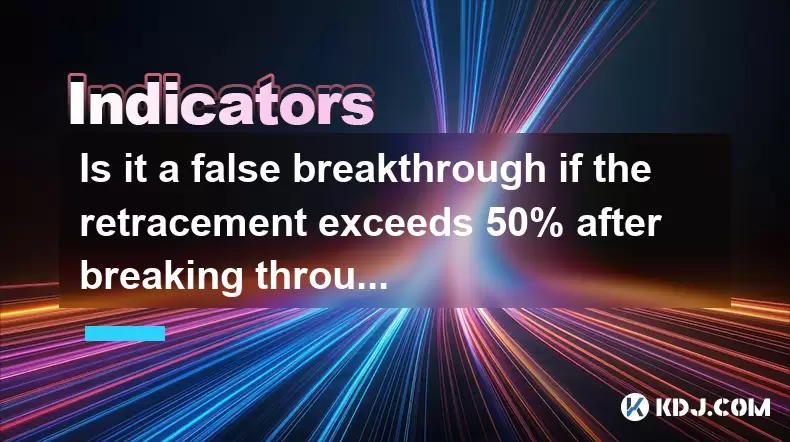
Is it a false breakthrough if the retracement exceeds 50% after breaking through the platform?
Jun 17,2025 at 08:01pm
Understanding Breakouts and Retracements in Cryptocurrency TradingIn cryptocurrency trading, breakouts refer to when the price of an asset moves beyond a defined support or resistance level with increased volume. These events often attract traders looking to capitalize on momentum. However, not all breakouts are valid. A false breakout, also known as a ...
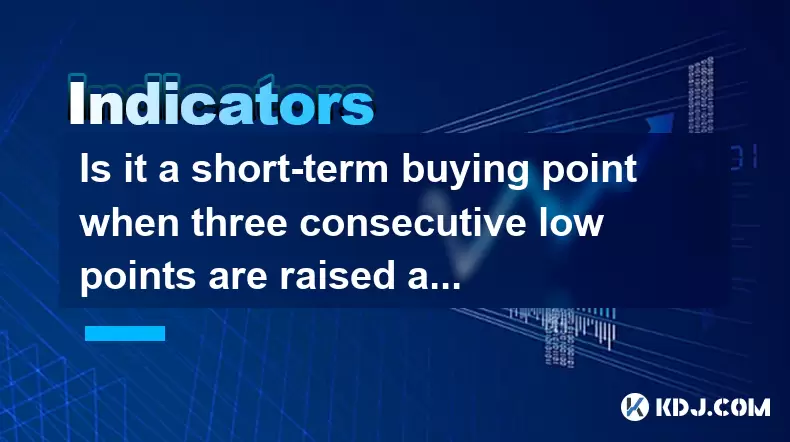
Is it a short-term buying point when three consecutive low points are raised at the 30-minute level?
Jun 17,2025 at 08:14pm
Understanding the Three Consecutive Low Points PatternIn technical analysis, identifying patterns in price movements is essential for making informed trading decisions. One such pattern that traders often observe is when three consecutive low points are raised within a specific timeframe — in this case, the 30-minute chart. This pattern suggests a poten...
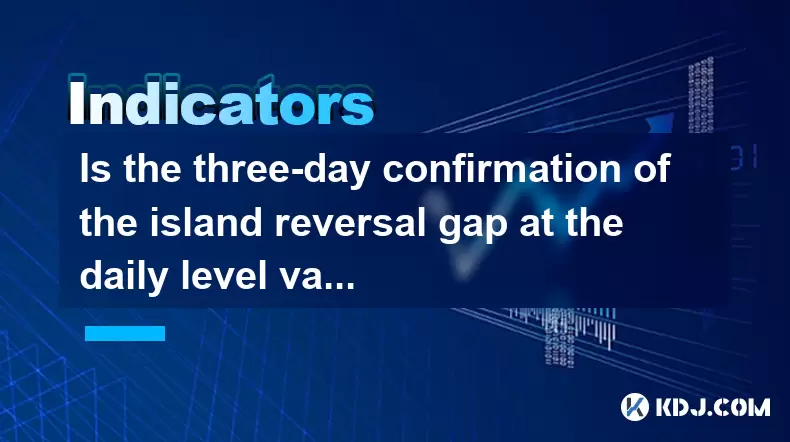
Is the three-day confirmation of the island reversal gap at the daily level valid?
Jun 17,2025 at 09:49pm
Understanding the Island Reversal Gap in Cryptocurrency TradingIn cryptocurrency trading, technical analysis plays a pivotal role in identifying potential market reversals. One such pattern is the island reversal gap, which signals a possible trend change. This pattern consists of a gap followed by a period of consolidation or sideways movement and then...
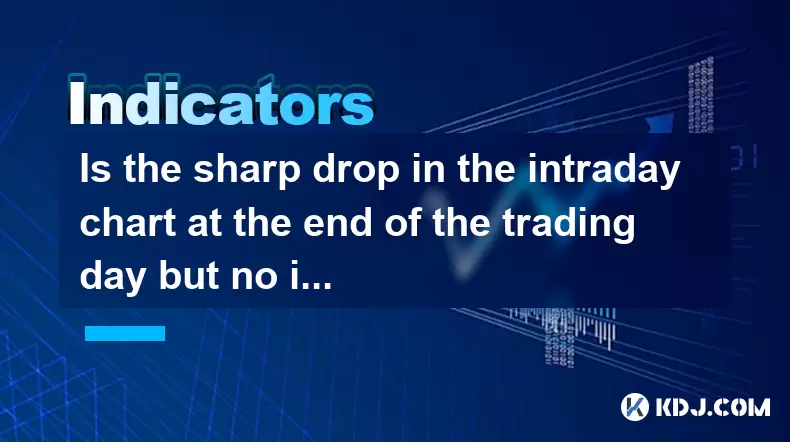
Is the sharp drop in the intraday chart at the end of the trading day but no increase in volume a trap to sell?
Jun 17,2025 at 08:35pm
Understanding the Intraday Chart DynamicsIn cryptocurrency trading, intraday charts are widely used by traders to analyze short-term price movements. These charts display price fluctuations within a single trading day and help traders make informed decisions based on real-time data. One common phenomenon observed is a sharp drop in price near the end of...
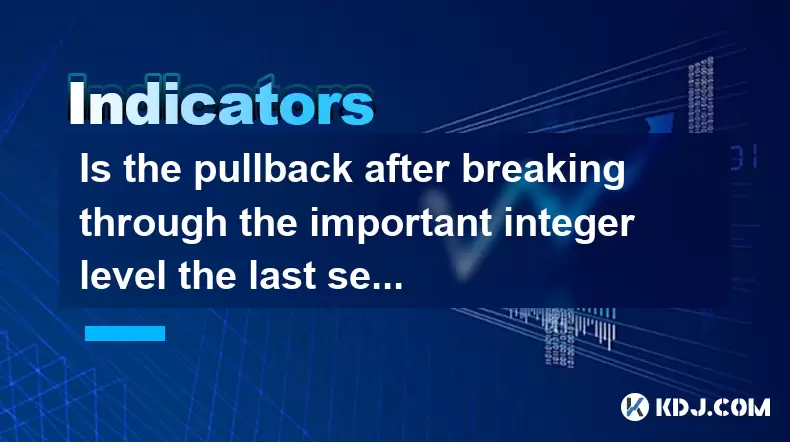
Is the pullback after breaking through the important integer level the last selling point?
Jun 17,2025 at 08:57pm
Understanding Important Integer Levels in Cryptocurrency TradingIn the world of cryptocurrency trading, certain price levels hold significant psychological and technical importance. These are commonly referred to as important integer levels—such as $10,000 for Bitcoin or $1,000 for Ethereum. These levels often act as strong support or resistance zones d...
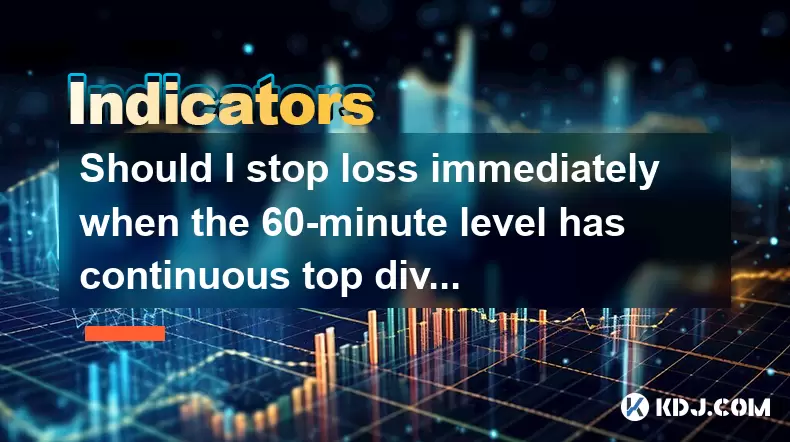
Should I stop loss immediately when the 60-minute level has continuous top divergence?
Jun 17,2025 at 05:28pm
Understanding Top Divergence in the 60-Minute ChartIn cryptocurrency trading, top divergence refers to a technical signal where the price of an asset makes higher highs while the indicator (often RSI or MACD) makes lower lows. This is commonly interpreted as a sign of weakening momentum and potential reversal. When this occurs on the 60-minute chart, it...

Is it a false breakthrough if the retracement exceeds 50% after breaking through the platform?
Jun 17,2025 at 08:01pm
Understanding Breakouts and Retracements in Cryptocurrency TradingIn cryptocurrency trading, breakouts refer to when the price of an asset moves beyond a defined support or resistance level with increased volume. These events often attract traders looking to capitalize on momentum. However, not all breakouts are valid. A false breakout, also known as a ...

Is it a short-term buying point when three consecutive low points are raised at the 30-minute level?
Jun 17,2025 at 08:14pm
Understanding the Three Consecutive Low Points PatternIn technical analysis, identifying patterns in price movements is essential for making informed trading decisions. One such pattern that traders often observe is when three consecutive low points are raised within a specific timeframe — in this case, the 30-minute chart. This pattern suggests a poten...

Is the three-day confirmation of the island reversal gap at the daily level valid?
Jun 17,2025 at 09:49pm
Understanding the Island Reversal Gap in Cryptocurrency TradingIn cryptocurrency trading, technical analysis plays a pivotal role in identifying potential market reversals. One such pattern is the island reversal gap, which signals a possible trend change. This pattern consists of a gap followed by a period of consolidation or sideways movement and then...

Is the sharp drop in the intraday chart at the end of the trading day but no increase in volume a trap to sell?
Jun 17,2025 at 08:35pm
Understanding the Intraday Chart DynamicsIn cryptocurrency trading, intraday charts are widely used by traders to analyze short-term price movements. These charts display price fluctuations within a single trading day and help traders make informed decisions based on real-time data. One common phenomenon observed is a sharp drop in price near the end of...

Is the pullback after breaking through the important integer level the last selling point?
Jun 17,2025 at 08:57pm
Understanding Important Integer Levels in Cryptocurrency TradingIn the world of cryptocurrency trading, certain price levels hold significant psychological and technical importance. These are commonly referred to as important integer levels—such as $10,000 for Bitcoin or $1,000 for Ethereum. These levels often act as strong support or resistance zones d...

Should I stop loss immediately when the 60-minute level has continuous top divergence?
Jun 17,2025 at 05:28pm
Understanding Top Divergence in the 60-Minute ChartIn cryptocurrency trading, top divergence refers to a technical signal where the price of an asset makes higher highs while the indicator (often RSI or MACD) makes lower lows. This is commonly interpreted as a sign of weakening momentum and potential reversal. When this occurs on the 60-minute chart, it...
See all articles

























































































